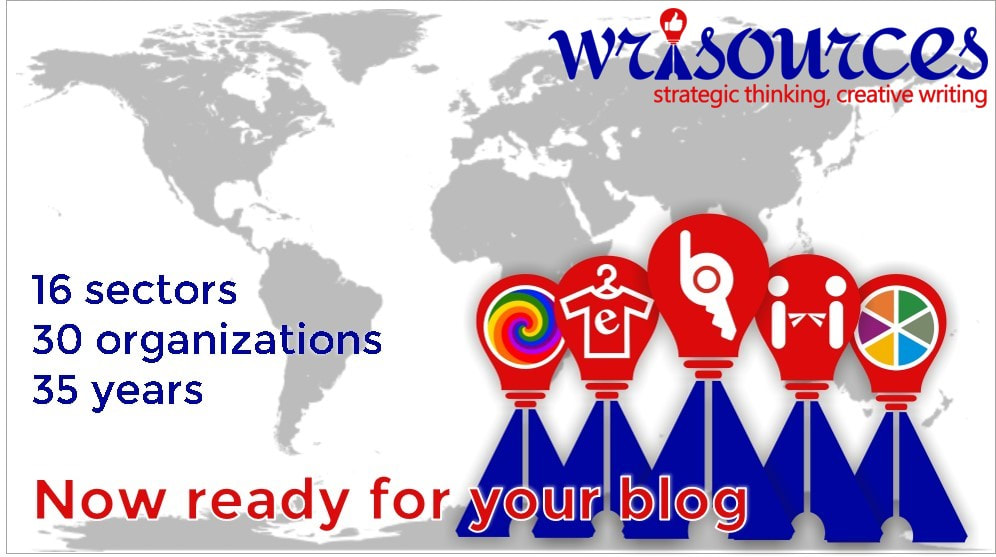|
Our culture falsely conflates who we are with what we do for income. Thus, we judge someone’s interests, values, and how meaningful their life is based on their job. Drawing these conclusions on someone’s identity and worth is never more prominent than when someone is unemployed. The silent determination, whether we admit it or not, is that if someone does nothing, they are nothing. Identity fulfilmentAccording to Esther Perel, “we see our jobs as a place for identity fulfilment”. Perel explains that if we go back just three generations, work looked very different. We were likely to live and work in the towns where we grew up, often in the same roles as our parents. We didn’t partake in $100,000 degrees or spend hours perfecting resumes, cover letters, LinkedIn profiles, and twitter bios to ensure that our work aligned with our lives’ goals, values, and purpose as we do now. In the past, our work was more conspicuous: if you worked in the bakery, people would see you there and know whether you made good bread; if you were a builder your house might demonstrate your work ethic in practice; if you were a teacher, the whole town might know how you taught and whether the kids in your class were better educated than the other teachers’ kids. By comparison, our work today is incredibly hidden and complex: only 25% of people can accurately describe what even their spouse does at work. Yet, our titles and employers should sufficiently convey who we are to total strangers. How have we got to this? This false concept of work as expressing identity and thus meaning was perpetuated to benefit your employer, not you. Capitalist color?Most famously, Deci and Ryan codified and popularized these ideas in their publication Intrinsic Motivation and Self-Determination in Human Behaviour. At its core, the theory states that, to make people behave in a certain way for a sustained period, the individual must believe that the behaviours are aligned with, and reinforcing of, the individual’s sense of self. In other words, if someone is going to do something on an ongoing basis (e.g. ride a skateboard) that person must believe that that behaviour reflects who they are as a person (e.g. riding a skateboard is rebellious and cool so I too am rebellious and cool). Therefore, if you want a population en masse to produce, distribute, and exchange wealth for the entirety of their lives, you need people to view these behaviours as both demonstrating and reinforcing their identities. The addition of purpose fulfilment through work furthers and reinforces this notion. If we were to define the most critical aspects of our identities, we would likely do so through the language of life’s purpose. In the past, we fulfilled our purpose primarily through religious affiliation, family, and community integration. Despite these well-documented sources of purpose, engagement in each has dwindled drastically for our generation. In the UK, 52% of the public say they do not belong to any religion, and young people are delaying having children by five years on average. With these traditional pillars of purpose absent in our lives, organizational psychologists recognized the opportunity for H.R. managers to better attract and retain talent by presenting their companies as places for purpose fulfilment. You can see this put into practice on the career pages of many employers. As researcher Richard Boyatzis and colleagues found, rather than enabling individuals to achieve their vision of their ideal selves, employees work towards an “ought self”, or what they think they should be, based on their employer’s vision. Although an employee may be content in the short term working towards their employer’s goals, this can only be sustained until “one realizes that their personal dreams are being compromised because this ‘ought self’ does not match their ideal self”. Ultimately this “awakening leads to feelings of betrayal and frustration for having wasted energy pursuing the dreams and expectations of others”. Three core human needsHaving spoken with over a hundred individuals across the world about their Purpose Projects, I identified three core human needs which we expect our jobs to fulfil. Yet they do not, or at least only partially. They are the needs to:
Our core human need to strive can be described as the emotional and spiritual need for the work that we do to contribute, meaningfully, to a better world. We want to believe that our contribution to the world has left it better off, in some small way. Our jobs fail miserably at providing this. Our need to thrive is the intellectual need to learn, satisfy curiosity, and grow. To grow, we need to be challenged. Ask yourself, does your job push you to grow daily? If the answer is no, you’re not growing as much as you could be. You’re missing a core human need.
2 Comments
Gabriel Victora, an immunologist at the Rockefeller University in New York City, built a career in music before turning to science. Science offered greater room for creativity, but music still informs his approach to research. I never thought of being anything other than a musician when I was growing up. I moved to the United States from Brazil at the age of 17 and studied classical piano for 6 years at the Mannes School of Music in New York City. When I moved back to my hometown of Pelotas in 2000, I was basically just practising for concerts: I’d practise a certain programme, then book four or five concerts and play them over a period of a month or two. It takes a lot of effort to perfect a programme, and you don’t want to play it only once. There were months where I didn’t do anything other than practise for the next cluster of concerts, and I would spend almost every waking hour practising at home. At some point, that endless practising started to take a toll. I became a bit burnt out with the whole business of performing as a professional musician. It wasn’t as creative as I wanted it to be. Enter science My father, Cesar Victora, is an epidemiologist who did pioneering work on how exclusive breastfeeding in the first six months of life reduces infant mortality. I thought it might be interesting to follow in his footsteps in science. My father suggested that I look up a medical-school friend of his who had a laboratory at the University of São Paulo in Brazil, and that I go and volunteer there, washing the glassware or doing whatever they’d let me do. They put me to work doing polymerase chain reactions, in which an enzyme is used to amplify pieces of DNA. I went in early in the morning, pipetted all day long, ran the samples on the gel at the end of the day and gave back some numbers. That’s the reason I’m an immunologist. If this friend of my father’s had been studying something else, I would have been something else. Music in science, science in musicWhen you’re sure of what you’re doing, as I was in music, it’s difficult to venture into something completely unknown. I remember at one point being lost in the woods with the complexity of immunology: there are so many loops of cells that tell other cells to do things that, in turn, tell the other cells to do things, and so on. Even as a musician, I was very attracted to music theory and Schenkerian analysis, (a scientific dissection of whole pieces of music to understand their structure and how the parts fit together). When I moved to science, that kind of analytical thought process jumped to the fore. Science is a lot of hard work, even repetitive work, which is similar to what I did in music. But you intersperse that with periods where you’re talking to people and thinking about things. When I started out, I’d pipette for a few hours, then have a break while samples were incubating or a gel was running, and that’s the time when you get to just exchange ideas with people. I think that social side of science is very important. And it provided a lot more variety than I was getting from playing the same pieces over and over again, just so that my fingers would stay in shape. How music helped researchMusic gave me an appreciation for things that were done a very long time ago, and the importance of trying to dig into these things. When I started out in science, I remember thinking how recent the references were. Whereas musical theorists might cite Johann Fux’s Gradus ad Parnassum, which is a treatise on counterpoint that influenced Bach, Beethoven and other composers, and dates back to 1725, biologists rarely cited anything that old. But there’s a long history to the kind of work we do today. For instance, we combined some old methods that biologist Karl Landsteiner developed in the early twentieth century with newer techniques to discover how T cells help to select the best antibodies in structures called germinal centres. Another aspect of my musical career that I continue to apply in the way I do science is that habit of just practising something over and over. The way you learn a piece of music is to practise. It shouldn’t matter that you’re bad at it at first: what matters is that you’re beginning something that’s very difficult and working on it until it becomes easy. You’ll become good at it at some point. The effort you put into it is what enables you to do challenging things. I use this approach a lot in science, and I encourage my trainees to do so, too. Difficult protocols and techniques, for example — they all benefit from many tries until you get the hang of them. A lot of the work, both in science and music, is just being willing to try something, fail repeatedly, and not take no for an answer. Adapted from an interview of Gabriel Victora by Jyoti Madhusoodanan in Nature.
Images: Screengrab from https://www.youtube.com/watch?v=f8al3rdxZj0&t=189s. Overlay: https://bit.ly/3Eh76HM We live in the era of efficiency. We want our teams to be lean. Our processes to be agile. And our output to be optimised. Instead of maximising our impact, we aim to minimise our waste. In the search to remove redundancy, marketing perceives paid social media and online video as cheap, able to reach defined audience and provide measurable response. Traditional broadcast communications are thought to be an inconceivable indulgence: they are mass, ignored and expensive. This article argues that efficient doesn’t necessarily mean effective, that more productive doesn’t necessarily mean more powerful, and that being mass, ignored and expensive are not points of weakness but, in fact, points of strength. Error 01: Mass media is wasteful because it is untargetedWhen you communicate on mass media, whether it’s a 30-second spot on prime-time TV, a press ad in a national newspaper, or a 6-sheet in a city centre, you will reach a large number of those who are in your target market. But you will also reach a large number of those who are not. Imagine, for example, that you’re advertising a luxury car. Broadcast communications will inevitably reach those who are too young to drive, those who are too old, those who don’t have a driver’s license, those who rely on public transport, those who are banned from driving and those who can’t afford a premium vehicle. But considering these segments to be ‘waste’ ignores one the most foundational roles that brands perform. It ignores the idea that brands not only provide functional and emotional benefits, but self-expressive ones. By driving an expensive brand of car, the owner communicates their financial status. The car’s design might communicate their sense of style. And its provenance might communicate their sensibilities. The fact that everybody understands what the brand represents makes it a more effective signal of what the buyer represents. Advertising to those who cannot afford the brand makes the product more appealing to those who can. For a potential audience to buy the brand, they have to know that a much wider audience aspires to do the same. Traditional broadcast communications not only reach a large audience, they reach that audience publicly. In mass media, not only do many people see your advert, but they see many other people see your advert as well. When you broadcast your brand, everybody knows that everybody else knows what you stand for. To summarise, yes traditional communications are mass, but that does not make them wasteful. Mass media reaches a large audience, imprinting brands on culture and imbuing them with self-expressive benefits. Error 02: Mass media is wasteful because it is ignored'It’s easy to see how low-attention communication channels could be seen to be inefficient. If two-thirds of each TV ad doesn’t receive active attention, isn’t that two-thirds of spend that is wasted? A group of contrarian researchers believes that the answer is no. The academics argue that when it comes to brand building, low attention equals high value. In 1964, Leon Festinger partnered with his colleague Nathan Maccoby to understand how people process messages during periods of distraction. A summary of the experiment appears in the book, The Choice Factory: “Festinger and Nathan Maccoby, academics at Stanford University, recruited members of college fraternities. They played those students an audio argument about why fraternities were morally wrong. The recording was played in two different scenarios: students either heard it on its own or they watched a silent film at the same time. After the students had heard the recording, the Stanford psychologists questioned them as to how far their views had shifted. Those who had heard the argument at the same time as the silent film were more likely to have changed their opinion." The silent film provided a distraction which reduced the level of attention that was applied to the audio argument. But rather than decrease the argument’s potency, it increased its power. The psychologists hypothesised that participants in the undistracted, high-attention group were able to generate counter-arguments that maintained their existing opinions and avoided the discomfort of experiencing cognitive dissonance. In the low-attention group, on the other hand, the participant's cognitive defences were not invoked and their ability to counter-argue hampered. [Paul Feldwick, author of The Anatomy of Humbug: how to think differently about advertising] summarises the argument beautifully: "When we don’t notice we are being influenced, we cannot argue back." Dr. Robert Heath, author of Seducing the Subconscious summarises: “My theory is that the most successful advertising campaigns in the world are not those we love or those we hate, or those with messages that are new or interesting. They are those (…) that are able to effortlessly slip things under our radar and influence our behaviour without us ever really knowing that they have done so. And the way in which these apparently inoffensive ad campaigns work is by 'seducing' our subconscious.” Michael Shudson, author of Advertising: The Uneasy Persuasion, concludes: “Ads may be more powerful precisely because people pay them so little heed that they do not call critical defences into play.” Error 03: Mass media is wasteful because it is expensiveDarwin’s theory of evolution stated that small mutations made individual animals more or less suited to their environment. Those whose traits benefited them would be more likely to survive, whilst those whose variations hindered them would fall foul of the opposite fate. Over time, species would evolve, converging towards an optimal set of natural abilities. But one thing puzzled Darwin. Why have some animals evolved with attributes that seem to have no functional utility? Why do some, even, have attributes that seem to hinder, not help, their survival. Darwin soon found his answer. He realised that evolution relied not just on which animals survived, but also on those which reproduced. Darwin deduced that the traits that he had perceived to be impediments to survival, were actually advantages when it came to sexual selection. Those who prospered despite their physical encumbrances, he believed, must be stronger, and thus more attractive mates. Or to put it another way, sexual partners deduce that the animals who waste resources must have enough resources to waste. But how does the field of biology relate to the world of business? In 2004 the marketing icon Tim Ambler published a landmark paper in The Journal of Advertising Research that drew a direct connection between the way that animals and brands signal their strength. Both, he argued, communicated through conspicuous waste: “Evidently, just as a female peacocks are drawn to mate with the largest, most spectacular tail feathers because the display signals superior biological fitness, consumers are attracted to brands that invest in lavish displays like Super Bowl commercials because such extravagance signals a high-quality, successful brand.” Ambler hypothesised that just as animals signalled their strength through unnecessary adornment, brands signalled their strength through unnecessary spend. The extravagant spend is to the brand what the plumage is to the peacock. It is its very inefficiency that makes it effective. Expensive media signals brand strength. Inefficient communication carries a “costly signal” that the brand being advertised is of high quality, that it is in strong financial shape, and that it is likely to continue being strong and successful for the foreseeable future. To test this theory, Thinkbox asked over 3,500 people if they perceived brands to be “high quality”, “financially strong” and “confident” when seeing them advertised in various media channels. TV, the archetypal expensive media channel, scored 43%, 50% and 58% respectively. Social media, on the other hand, scored significantly lower at 19%, 21% and 40%. The research suggests a broader truth. On every single metric expensive, traditional media (TV, newspapers, magazines and radio) outperformed cost-efficient digital channels (social media and video sharing sites). Rory Sutherland sums up in Alchemy: “The potency and meaningfulness of communication is in direct proportion to the costliness of its creation (…). This may be inefficient – but it’s what makes it work.” Just as a peacock’s plumage signals strength, and the battlements of British banks signal trustworthiness, expensive media signals the same for brands. Broadcast communications cannot target specific segments. But they can imprint brands on culture and imbue them with self-expressive benefits. Mass media cannot command the most attention. But it can bypass an audiences’ cognitive defences and lodge a brand in the audience’s long-term memory. Traditional channels cannot compete when it comes to cost. But they can use expensive media to signal the strength, security and stability of the brands that advertise on them. As Tim Ambler famously put it: “The waste in advertising is the part that works.” Adapted from the article The Errors of Efficiency by Alex Murrell accessed at https://www.alexmurrell.co.uk/articles/the-errors-of-efficiency
Image: https://cliparting.com/free-peacock-clipart-32777/ “People don’t know how ordinary success is,” said Mary T. Meagher, winner of three gold medals in the Los Angeles Olympics, when asked what the public least understands about her sport. When Mary T. Meagher was 13 years old and had qualified for the National Championships, she decided to try to break the world record in the 200-Meter Butterfly race. She made two immediate qualitative changes in her routine: first, she began coming on time to all practices. She recalls now, years later, being picked up at school by her mother and driving (rather quickly) through the streets of Louisville, Kentucky, trying desperately to make it to the pool on time. That habit, that discipline, she now says, gave her the sense that every minute of practice time counted. And second, she began doing all of her turns, during those practices, correctly, in strict accordance with the competitive rules. Most swimmers don’t do this; they turn rather casually, and tend to touch with one hand instead of two (in the butterfly, Meagher’s stroke). This, she says, accustomed her to doing things one step better than those around her—always. Those are the two major changes she made in her training, as she remembers it. "I never looked beyond the next year, and I never looked beyond the next level. I never thought about the Olympics when I was ten; at that time I was thinking about the State Championships. When I made cuts for Regionals [the next higher level of competition], I started thinking about Regionals; when I made cuts for National Junior Olympics, I started thinking about National Junior Olympics . . . I can’t even think about the [1988] Olympics right now. . . . Things can overwhelm you if you think too far ahead." In the pursuit of excellence, maintaining mundanity is the key psychological challenge. In common parlance, winners don’t choke. Faced with what seems to be a tremendous challenge or a strikingly unusual event, such as the Olympic Games, the better athletes take it as a normal, manageable situation...and do what is necessary to deal with it. Source: https://academics.hamilton.edu/documents/themundanityofexcellence.pdf
Image: https://alchetron.com/cdn/mary-t-meagher-41561f59-ac05-4f52-8a92-b39693da3d1-resize-750.jpeg |
Vijayakumar Kotteri
Abstracts from works of different authors. Archives
November 2021
Categories |

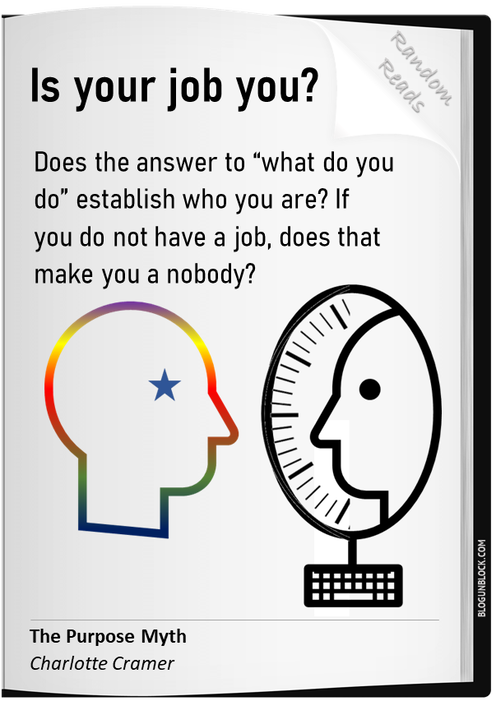
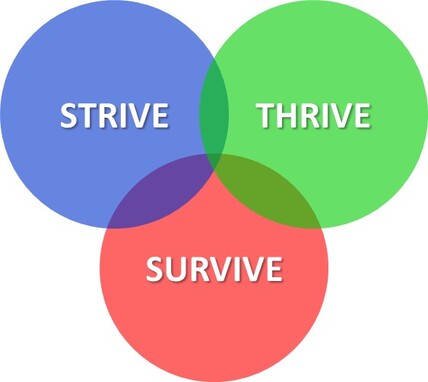

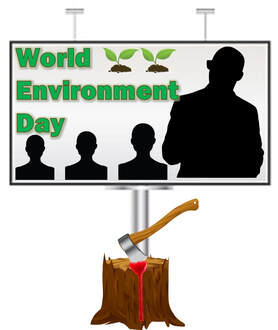
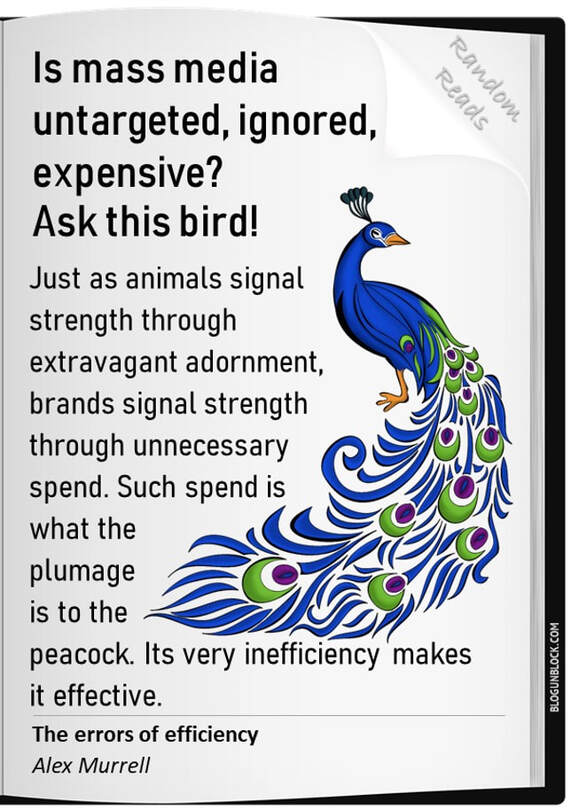
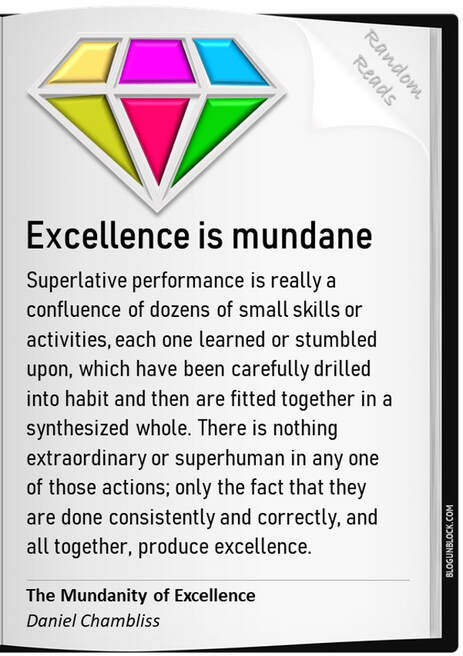

 RSS Feed
RSS Feed
